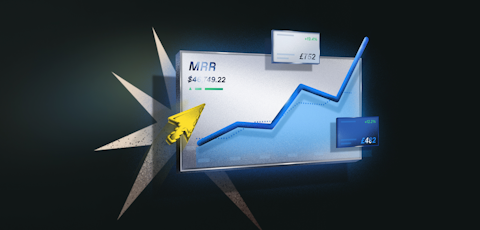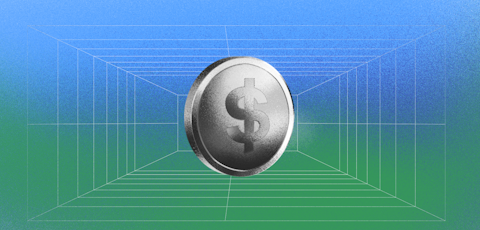What is net dollar retention (NDR) and how do you calculate it?

Leading SaaS companies are shifting to a new scale-up model focused on long-term relationships, efficient growth, and net dollar retention (NDR). But what exactly is NDR? Here’s everything you need to know.
What is net dollar retention (NDR)?
Net dollar retention (NDR) is a SaaS metric that represents how much revenue growth or churn your company had over time from your existing pool of customers, revealing your business's health and growth potential. Expressed as a percentage, NDR – also referred to as net revenue retention(NRR) – takes into account upgrades, downgrades, and churn. It's an important high-level metric, as it shows you (and investors) how much growth you’re achieving regardless of whether you acquire any new customers. As such it’s the ultimate SaaS success metric and one you need to be on top of to understand the nuances of your company's growth.
Why net dollar retention is the metric of necessity
Your company’s NDR shows two important things:
- How much growth you’re able to generate without acquiring any new customers. Or conversely, how leaky the bucket is you’re trying to fill.
- By extension, how satisfied your existing customers are with the value exchange you’re providing, which reflects the strength and stickiness of your product and proposition.
Both of these insights feed into how well-positioned you are to grow at speed.
If your existing pool of customers is spending more with you over time, your NDR rate will be over 100%. The higher your NDR the more secure your business is seen to be, as your customers are clearly deriving long-term value from the exchange. Otherwise, why would they be choosing to expand the relationship and spend more?
With a healthy NDR as your baseline, growth compounds and markets take note. Just look at the NDRs of these scale-ups on their (very successful) IPO day:
- Snowflake - 158%
- Twilio - 155%
- Elastic - 142%
- PagerDuty - 139%
- AppDynamics - 123%
If Snowflake had suspended all customer acquisition activity a year before their IPO day, they still would have grown by 58% that year by the grace (and increased spend) of customers they’d already acquired. That is one solid foundation to be building on.
On the other hand, if your NDR is lower than 100%, your existing customer base is contracting. You can still be seeing a positive MRR overall with an NDR below 100%. This would be the case if your customer acquisition revenue is greater than the revenue contraction from existing customers. If you’re only paying attention to MRR, you could easily overlook how much money is leaking from the business and obstructing your growth. Plugging those leaks will propel that growth.
What’s the benchmark for net dollar retention?
A review of the NDRs of 40 SaaS companies when they filed their S-1 form (in anticipation of going public) shows the median as 109%.
If your NDR is above 120% then you are in truly excellent shape.
Anything below or just over 100% needs investigating sooner rather than later.
So how do I calculate my business’ NDR?
The formula for calculating your NDR for a set period is as follows:

Here’s an example to make that a little clearer:
A small business starts the year with $500,000 in annual recurring revenue.
Over that year, a whole bunch of existing customers decide to upgrade their subscriptions and spend more with the company - this amounts to $100,000 more recurring revenue.
Other customers decide to downgrade, causing a reduction of $30,000 in total.
Then there are a few who decide to stop their subscriptions altogether. That comes to $10,000 in churn.
Plotted into our above formula, the equation becomes:
($500,000 + $100,000 - $30,000 - $10,000) / $500,000 x 100 = 112% NDR
That year, the business grew by 12% ($60,000) in ARR from the customer base they went into the year with. Any further growth in ARR they experienced will have been from new customers.
How do I grow my business’ NDR?
Your NDR is the result of three central growth levers. These are the strategies you need to improve to grow your NDR and drive exponential business growth:
1. Product strategy
If your product is delivering essential value for customers, then they’re unlikely to churn or downgrade, and more likely to expand their usage and spend more. If your product is not being adopted properly, or not delivering essential business value, then people will drop it.
2. Go-to-market strategy
If your go-to-market strategy is effective for acquiring new customers, but these customers aren’t sticking around, then you probably need to assess whether you’re accurately communicating the value of your offering and really targeting your best-fit buyers.
3. Revenue delivery strategy
You might be nailing your product and go-to-market strategies, but hemorrhaging revenue from existing customers because of friction in your revenue delivery processes. Involuntary churn – when a customer’s subscription is canceled because of failed payments – accounts for 20-40% of churn in SaaS. That’s no small amount! Better revenue delivery infrastructure will protect you from this sort of loss and many others.



